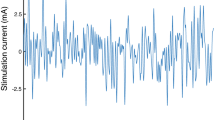Abstract
Combined visual and vestibular influences on locomotor control, particularly in changing environments, are little understood. We studied such influences on body orientation and foot trajectory control during level walking and obstacle avoidance. Six young adults walked on the level and over an obstacle while vision was present or occluded as well as while vestibular information was intact or perturbed using galvanic vestibular stimulation (GVS). The occlusion of vision caused a slowing of gait during obstacle avoidance as well as increased clearance of the leading limb over the obstruction. GVS caused lateral deviations in head and trunk roll angles as well as in foot and trunk displacements, but these lateral deviations were the same during both level walking and obstacle avoidance. In addition, GVS had no effect at all on sagittal plane factors such as speed, foot proximity to the obstacle and vertical clearance over the obstacle. Overall, there is a complex visual control of bilateral obstacle avoidance, but the lack of differences in GVS effects between level and obstructed walking shows that vestibular information is not upregulated for obstacle avoidance. In addition, the robust indifference of anterior foot placement and body displacement to significant lateral deviations from GVS suggests an orthogonally based sensori-locomotor control.






Similar content being viewed by others
References
Bense S, Stephan T, Yousry TA, Brandt T, Dieterich M (2001) Multisensory cortical signal increases and decreases during vestibular galvanic stimulation (fMRI). J Neurophys 85:886–899
Bent LR, McFadyen BJ, Merkley V, Kennedy PM, Inglis JT (2000) Magnitude effects of galvanic vestibular stimulation on the trajectory of human gait. Neurosci Lett 279:157–160
Bent LR, Inglis JT, McFadyen BJ (2002a) Vestibular contributions across the execution of a voluntary forward step. Exp Brain Res 143(1):100–105
Bent LR, McFadyen BJ, Inglis JT (2002b) Visual-vestibular interactions in postural control during the execution of a dynamic task. Exp Brain Res 146(4):490–500
Bent LR, Inglis JT, McFadyen BJ (2004) When is vestibular information important during walking? J Neurophys 92(3):1269–1275
Bent LR, McFadyen BJ, Inglis JT (2005) Vestibular contributions during human locomotor tasks. Exerc Sport Sci Rev 33(3):107–113
Britton TC, Day BL, Brown P, Rothwell JC, Thompson PD, Marsden CD (1993) Postural electromyographic responses in the arm and leg following galvanic vestibular stimulation in man. Exp Brain Res 94:143–151
Carlsen AN, Kennedy PM, Anderson KG, Cressman EK, Nagelkerke P, Chua R (2005) Identifying visual-vestibular contributions during target-directed locomotion. Neurosci Lett 384(3):217–221
Cauquil AS, Day BL (1998) Galvanic vestibular stimulation modulates voluntary movement of the human upper body. J Physiol 513:611–619
Chen HC, Ashton-Miller JA, Alexander NB, Schultz AB (1991) Stepping over obstacles: gait patterns of healthy young and old adults. J Gerontol 46(6):M196–M203
Chou LS, Draganich LF (1998) Placing the trailing foot closer to an obstacle reduces flexion of the hip, knee, and ankle to increase the risk of tripping. J Biomech 31(8):685–691
Chou LS, Kaufman KR, Hahn ME, Brey RH (2003) Medio-lateral motion of the center of mass during obstacle crossing distinguishes elderly individuals with imbalance. Gait Posture 18(3):125–133
Day BL, Guerraz M, Cole J (2002) Sensory interactions for human balance control revealed by galvanic vestibular stimulation. Adv Exp Med Biol 508:129–37
Day BL, Séverac Cauquil A, Bartolomei L, Pastor MA, Lyon IN (1997) Human body-segment tilts induced by galvanic stimulation: a vestibularly driven balance protection mechanism. J Physiol 500:601–672
Deshpande N, Patla AE (2005) Postural responses and spatial orientation to neck proprioceptive and vestibular inputs during locomotion in young and older adults. Exp Brain Res 167(3):468–474
Fitzpatrick RC, Day BL (2004) Probing the human vestibular system with galvanic stimulation. J Appl Physiol 96(6):2301–2316
Fitzpatrick RC, Wardman DL, Taylor JL (1999) Effects of galvanic vestibular stimulation during human walking. J Physiol 517:931–939
Hess F, Van Hedel HJ, Dietz V (2003) Obstacle avoidance during human walking: H-reflex modulation during motor learning. Exp Brain Res 151(1):82–89
Jahn K, Strupp M, Schneider E, Dieterich M, Brandt T (2000) Differential effects of vestibular stimulation on walking and running. Neuroreport 11:1745–1748
Kawato M (1999) Internal models for motor control and trajectory planning. Curr Opin Neurobiol 9(6):718–727
MacKinnon CD, Winter DA (1993) Control of whole body balance in the frontal plane during human walking. J Biomech 26:633–644
Mars F, Vercher JL, Popov K (2005) Dissociation between subjective vertical and subjective body orientation elicited by galvanic vestibular stimulation. Brain Res Bull 65(1):77–86
Mohagheghi AA, Moraes R, Patla AE (2004) The effects of distant and on-line visual information on the control of approach phase and step over an obstacle during locomotion. Exp Brain Res 155:459–468
Patla AE (1998) How is human gait controlled by vision? Ecol Psychol 10:287–302
Patla AE, Prentice S, Robinson C, Neufeld J (1991) Visual control of locomotion: strategies for changing direction and for going over obstacles. J Exp Psychol Hum Percept Perform 17:603–634
Patla AE, Greig M (2006) Any way you look at it, successful obstacle negotiation needs visually guided on-line foot placement regulation during the approach phase. Neurosci Lett 397:110–114
Reynolds RF, Day BL (2005) Visual guidance of the human foot during a step. J Physiol 569:677–684
Rietdyk S, Rhea CK (2006) Control of adaptive locomotion: effect of visual obstruction and visual cues in the environment. Exp Brain Res 169:272–278
Wardman DL, Taylor JL, Fitzpatrick RC (2003) Effects of galvanic vestibular stimulation on human posture and perception while standing. J Physiol 551:1033–1042
Wenzel R, Bartenstein P, Dieterich M, Danek A, Weindl A, Minoshima S, Ziegler S, Schwaiger M, Brandt T (1996) Deactivation of human visual cortex during involuntary ocular oscillations. A PET activation study. Brain 119:101–110
Acknowledgments
The authors thank Guy St-Vincent, Francois Comeau, Amélie Desjardins and Daniel Tardif for their technical assistance. Financial support from the Natural Sciences and Engineering Research Council of Canada.
Author information
Authors and Affiliations
Corresponding author
Rights and permissions
About this article
Cite this article
McFadyen, B.J., Bouyer, L., Bent, L.R. et al. Visual-vestibular influences on locomotor adjustments for stepping over an obstacle. Exp Brain Res 179, 235–243 (2007). https://doi.org/10.1007/s00221-006-0784-0
Received:
Accepted:
Published:
Issue Date:
DOI: https://doi.org/10.1007/s00221-006-0784-0




